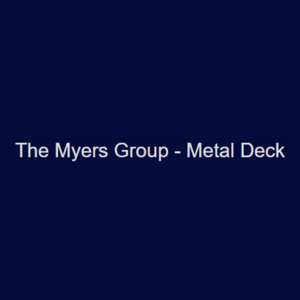
Have you ever looked at a tall building or a wide sports stadium and wondered what keeps it standing strong? It's not just the walls and floors you can see. It's also the hidden parts that hold everything up, i.e., steel joists and girders.
These parts are like the bones of a building. Choosing the right ones is very important. If you choose the wrong ones, the building might not be safe or may cost more to build. Let's learn how to choose the right joists and girders for your project.
What Are Joists and Girders?
First, let's understand the difference between the two:
Steel joists are long, light pieces of steel that help hold up floors or roofs. They are usually placed close together and support smaller sections of the building.
Steel girders are bigger and stronger. They carry heavier loads and support the joists. Girders connect to columns, which carry the weight down to the ground.
You can think of it like this: joists are like the planks on a bridge, and girders are the beams that hold those planks up.
What Does Your Building Need?
Different buildings need different kinds of support. A school gym needs to hold up a wide roof. A warehouse might need to hold heavy machines. Before you choose your joists and girders, ask:
How much weight does the building need to hold?
How wide are the spaces between the walls or columns?
Will anything heavy be hanging from the ceiling?
These questions help engineers know how strong and how big the steel parts need to be.
Planning the Layout
Once you know the weight and size your building needs to support, the next step is planning how to place the joists and girders. This is called the layout.
Joists are often placed in rows, like lines across a roof or floor.
Girders run underneath the joists and carry their weight.
The distance between joists matters too. If they are too far apart, the roof or floor might not be strong enough. If they are too close together, you may use more steel than needed and spend more money.
Why Metal Roof Decking Matters?
If your building has a roof made of metal, you'll probably use metal roof decking. This is the flat sheet of metal that sits on top of the joists. It helps hold up the roof and also keeps the building from swaying in strong wind or earthquakes.
The roof deck must match the spacing of the joists. It also needs to be strong enough to support things like snow, air conditioners, or even people walking on the roof.
Keeping Costs and Materials in Balance
It's important not to use too much steel, or you will waste money. But using too little can be dangerous. That's why builders work with engineers to find the right size and amount of joists and girders. Using pre-made steel joists and girders can help. These are built in factories and shipped to the building site. They are made to fit the design of your building and can save time and money.
Think About the Future
Sometimes, buildings need to change later. You might add a new floor, heavy machines, or solar panels. So, it's smart to choose joists and girders that can handle extra weight in the future. Also, make sure your choices follow local building rules. These rules are made to keep buildings safe for everyone
Final Words
Choosing the right steel joists and girders is a big part of building a safe and strong structure. These parts work together with metal roof decking to support everything above. When you make smart choices from the start, your building will be stronger, safer, and ready for anything the future brings.


Write a comment ...